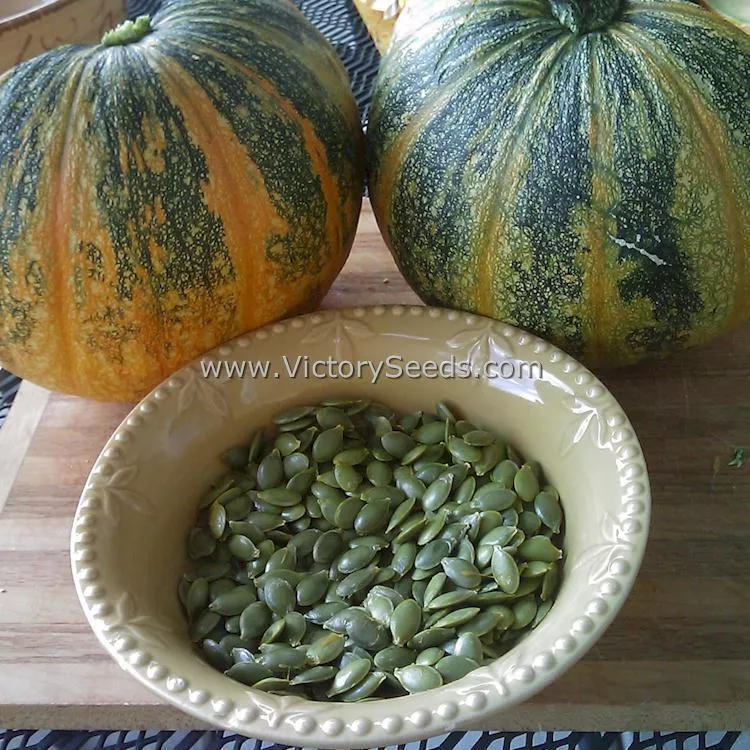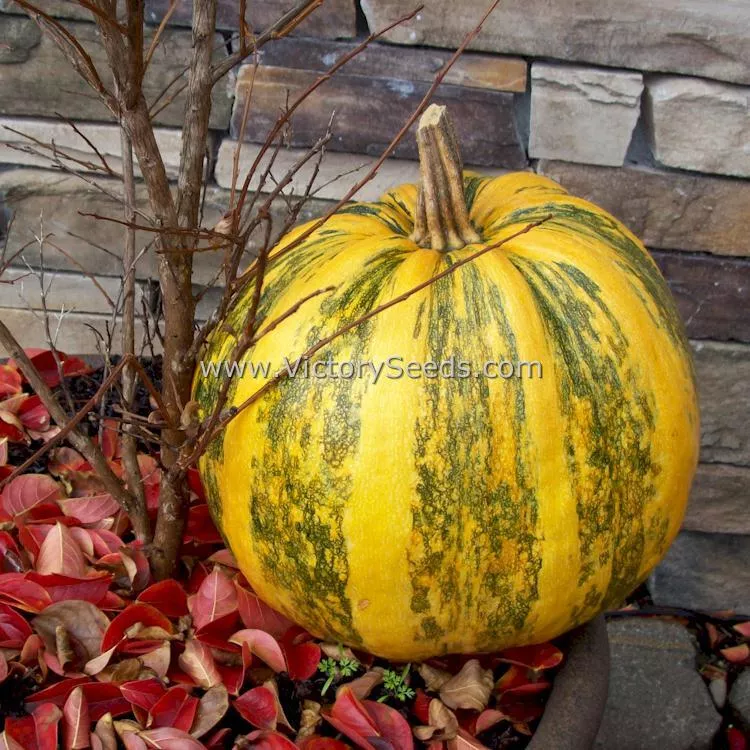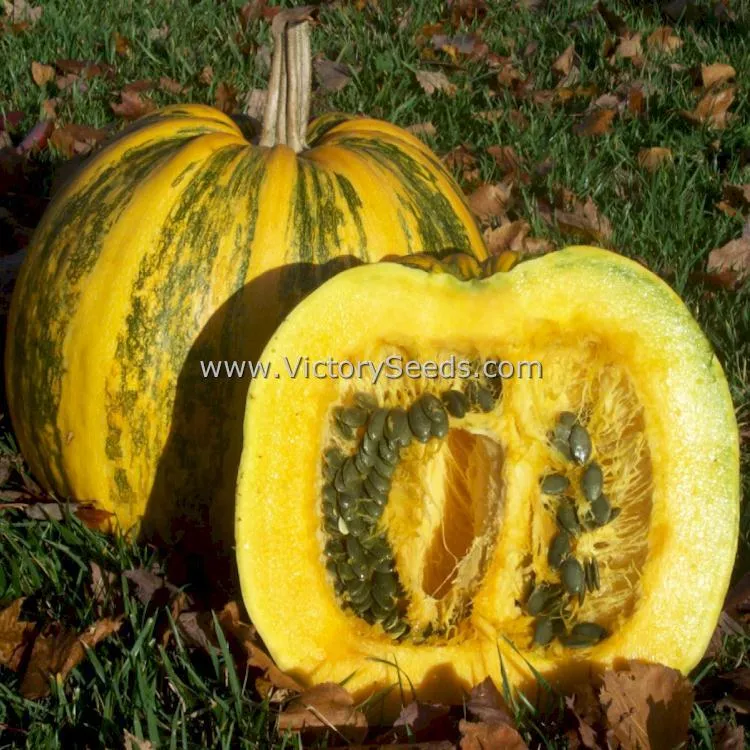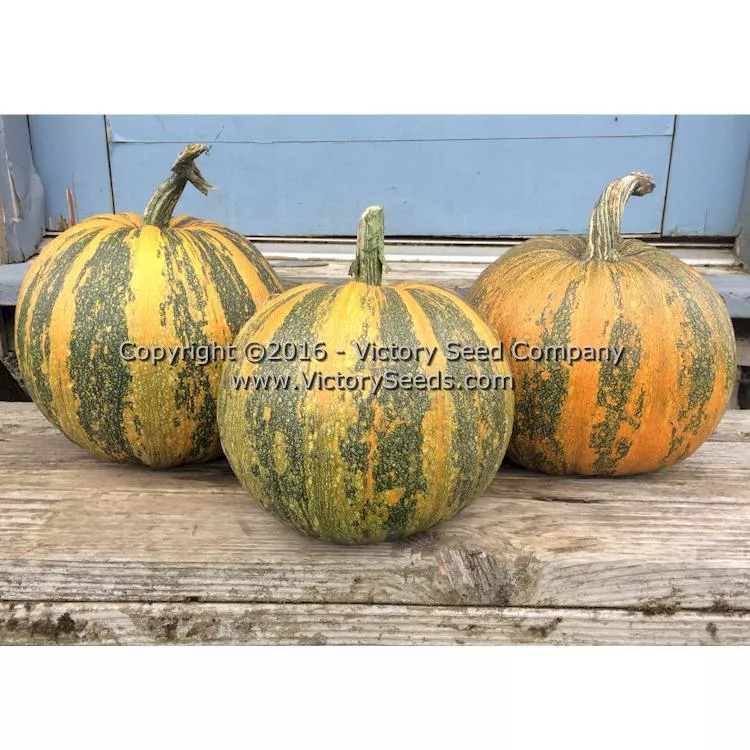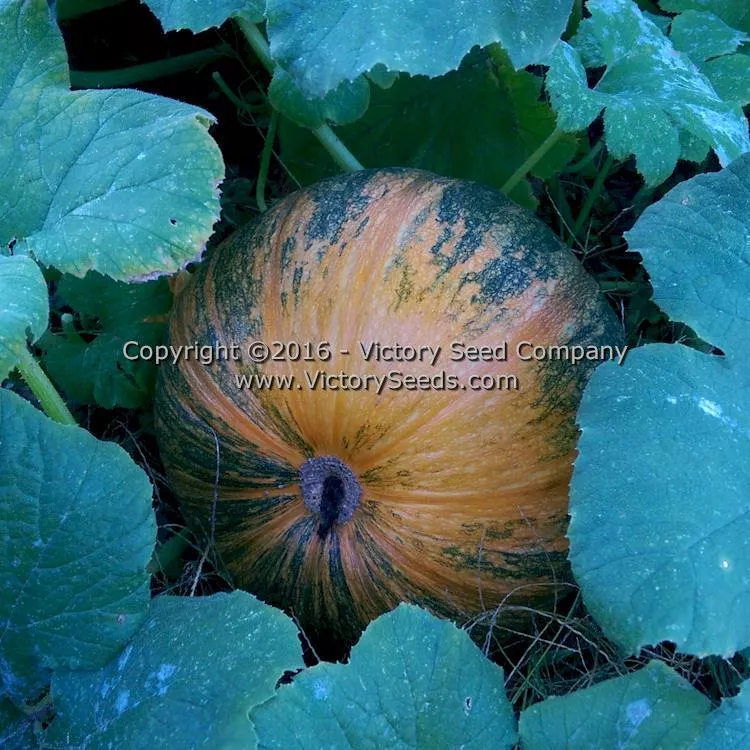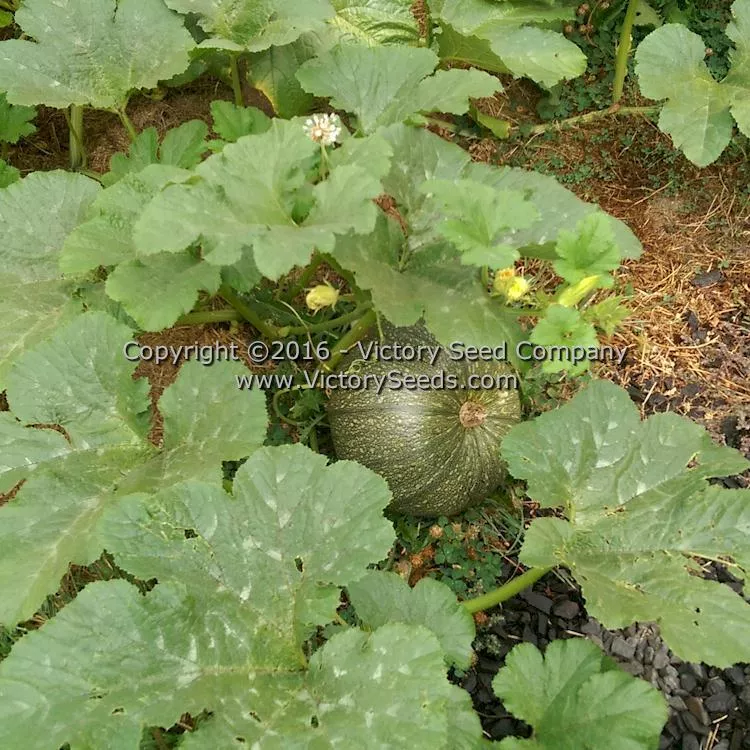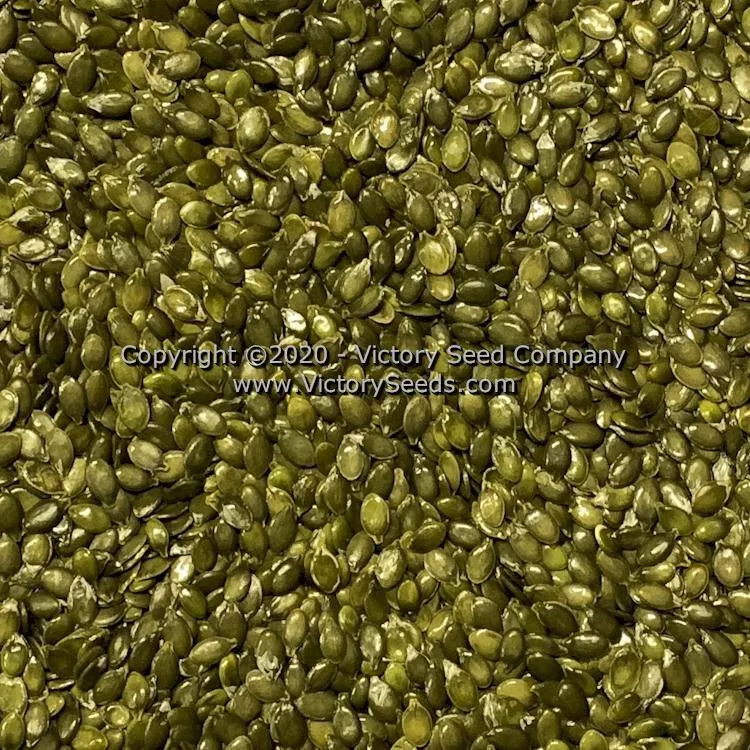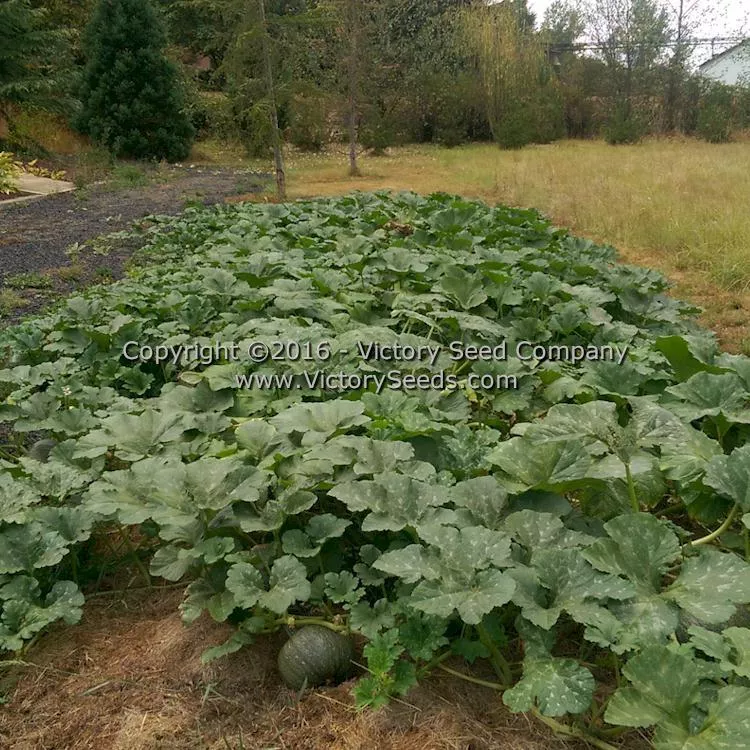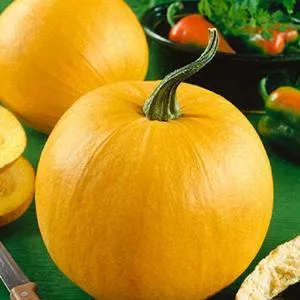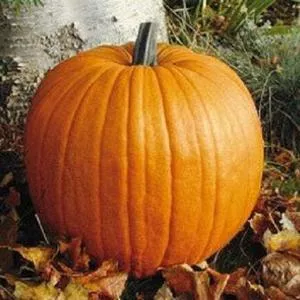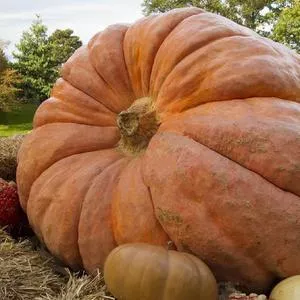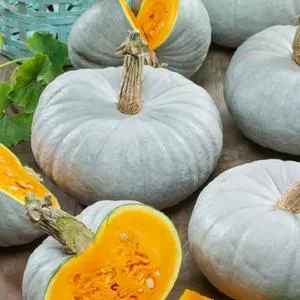







Williams Naked Seeded Pumpkin
Price: $4.45
SKU: 3320091Since the seeds do not have a protective seed coat, either start seeds indoors in peat pots, or wait so direct sow in the garden after the soil has warmed to 70F to 75F. The plants should be spaced from one to two feet apart in rows spaced six to eight feet apart. The vines will reach eight to ten feet in length, develop shade leaves that grow up to two-and-a-half feet across, and typically produce four to eight fruit that average twelve to fifteen pounds each but that can reach up to twenty two pounds!
To harvest seeds, allow unblemished fruit to fully ripen and then clean and dry the seeds. Seed saving requires delicate handling, as the thin, green skin is fragile to the touch. Eating the seeds raw provides the most nutritional value. Roasting adds flavors. In addition to being a healthy snack food, the oil is used in salads and drizzled on soups and pasta. Due to its low smoke point temperature, it can not be used for frying.
And you do not need to waste all of the flesh. Traditionally it is used as animal feed but it is tasty and fine enough to be used in pies, breads, and other pumpkin recipes.
Keep watered during the dry weather and cultivate or mulch to reduce weeds. Harvest fruit when skin cannot be easily dented with your fingernail. Cut from vine leaving a two inch stem.
Information References:
- 1998 New York Times Article
- 2009 The Atlantic Article
- http://www.hort.purdue.edu/newcrop/ncnu07/pdfs/bavec185-189.pdf
- Wikipedia Article
- If you are interested in finding fresh pressed pumpkin seed oil (and other healthy products), check out the Seed Oil Company out of Grants Pass, Oregon - www.SeedOilCompany.com. They are a small, family operated, direct from farm to your family business that not only developed this pumpkin seed variety, they are also working to restore small-farm agriculture in their region.
Customer Reviews:
By Beverly Butera on August 1, 2022
First time growing this variety. I started them indoors in peat pots. They were planted out late due to a cold & wet spring. Every transplant survived & thrived. When I say thrived,.I mean thrived...big beautiful plants. I planted two at one end of the garden and they grew in the wrong direction, covering my tomatos, growing up the bean & cucumber trellises. I can clearly see about 10 to 12 good sized lovely pumpkins on these two plants. The other 3 plants were put in two raised beds & are sprawling across the yard about 30 feet. I haven't harvested the pumpkins yet but very impressed so far! From a chilly & rainy spring to hot & humid 100 temperatures back to 8 of rain in 6 hours these have thrived. I am looking forward to the harvest which looks to be very good. My only warning...leave A LOT of space for these to grow. I will definitely grow again but will give them their own spot.
By Joseph Duncan on December 10, 2020
Grew this pumpkin in 2020. The three plants produced three REALLY BIG pumpkins. These were on two of the plants. The third plants two fruits were small and undeveloped. I live in a mountainous area (3,300 feet elevation) with a short growing season. The big pumpkins were excellent. Will try saving seed from these. BTW, Victory is a great seed producer to deal with.
By Anne Holzinger on September 10, 2019
Tried to grow these twice before with no success. This year I planted them in straight composted cow manure, made concerted effort not to over water, and mulched deeply. This time I was blessed with a great crop of large healthy looking fruit, they aren't quite ready for harvest yet as all my crops have been late with the weather but so far I'm happy with them.
By Rachel Langmaid on February 13, 2017
Although a watering issue in my garden led to a crop failure of these pumpkins for me this year, a friend was kind enough to bring me a pumpkin from one of the starts I had provided him with. I just got around to roasting the seeds yesterday, and they were amazing. Plump, sweet, and nutty with absolutely no hull to speak of.<br><br>A 10 pumpkin yielded a cup of seeds, and the seeds required almost no cleaning and separated from the guts easily. This is a great pumpkin to grow, particularly if you have livestock or chickens that will eat the flesh. I'm ordering more seeds this year!
By Katie Bruce on February 13, 2016
This pumpkin takes all the work out of pumpkin seeds. Planting requires some gentle handling, as the seeds are quite fragile without their protective hull. However, this is where the hassle ends. They germinated well, transplanted well, and grew with practically no attention other than regular watering. From two hills, we harvested around 14 ripe pumpkins. The seeds are delicious and all-purpose, with a nutty, earthy flavor. The flesh is best to feed to the chickens or pigs - get a good pie pumpkin if you're hoping for stringless, sweet pumpkin puree. This variety's gig is producing delicious pumpkin seeds with none of the work of cracking the hulls off, and it does it very well!
By Joel Robbins on December 3, 2015
One of the 2015 crops that exceeded expectations. Our vines were huge, beautiful, and prolific. They produced 6-8 pumpkins per vine, and 1.5-2.25 cups of delicious hull-less seed per pumpkin. Super easy to grow and to remove the seeds. I've recommended this to gardening friends, and am allocating more space in our garden next year.
By Davilyn Eversz on January 17, 2015
Each vine does not produce a whole lot, maybe four or so but it is offset by the most wonderful pumpkin seed in the world. Each pumpkin does produce a fair amount of seed and it is easy to get them out of the cavity and clean them. They were easy to grow, not much maintenance, a pretty little pumpkin and it is easy to tell when its ripe. Never had squash borers in ten years of growing but they showed up in droves for this pumpkin. I vacuumed them up every morning. This year I will grow them in cut in half 55 gallon drums and keep the vines on a trellis so I can keep a better watch for the borers. They taste like butter! They are crisp, not meaty like regular pumpkin seeds, just a very delicate seed wonderful for snacking. I have to grow a lot more this year as they are like potato chips, you can't just eat a handful.
By Julianne Wiley on September 18, 2014
I am sorry to say I was very disappointed with this variety. On the positive side, the plants were good-looking: just 5 plants ended up covering 80 square feet of garden! The vines came on big and strong, and when in full leaf everything looked fine and lush.<br><br>But the pumpkins were useless. Most of them rotted right on the ground. They looked nice, but when you picked them up the bottoms fell out, they were found to be maggoty inside, and they stank.<br><br>Even the ones that looked smooth and perfect and survived being ever-so-carefully picked, developed soft, rotten spots while sitting on the kitchen counter. The seeds were of uneven quality, with maybe 1/3 being flat, white and underdeveloped, while another 1/3 were post-mature and sprouting while in the cavity of the pumpkin. The flesh of the pumpkin was soft, pale yellow and watery. Half of it was too mushy to use.<br><br> Sorry, like I said. Maybe I should blame the weather.<br>
By Nick Walsh on July 13, 2014
The vines are quite large and the male flowers are sometimes triplets or twins. However my plants are quite conservative with the female flowers, only setting about three or for within a reasonable amount of time. Also very tough plants and vigorous, they have thrived even with chickens breaking into the garden and trampling them quite a fiew times.
By Joanna Dale on November 1, 2012
We love these pumpkins! The seeds are delicious and the flesh is thick. We made lots of puree for pie and the kids carved jack-o-lanterns with the rest. Great Variety! Will definitely grow again!

